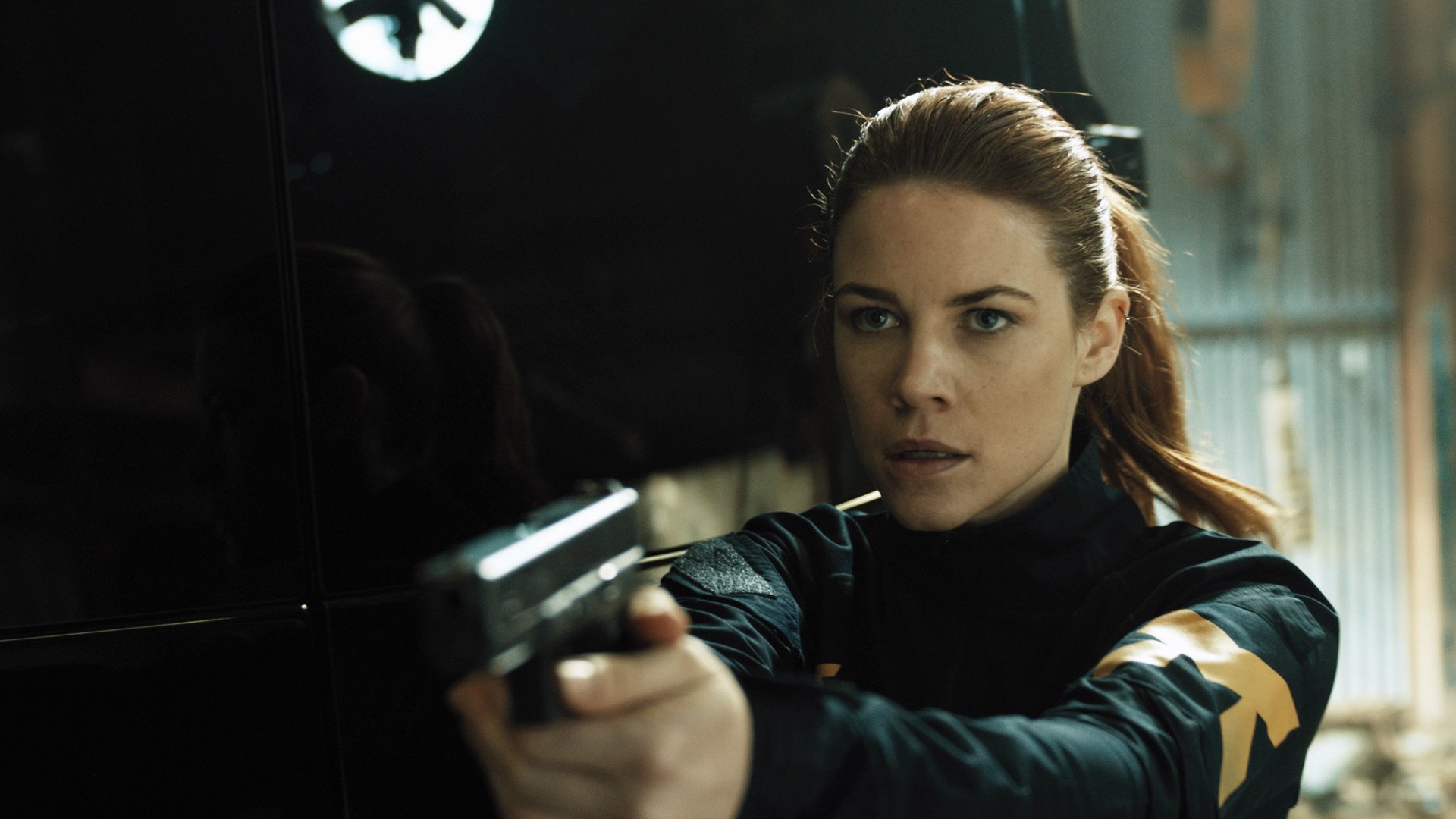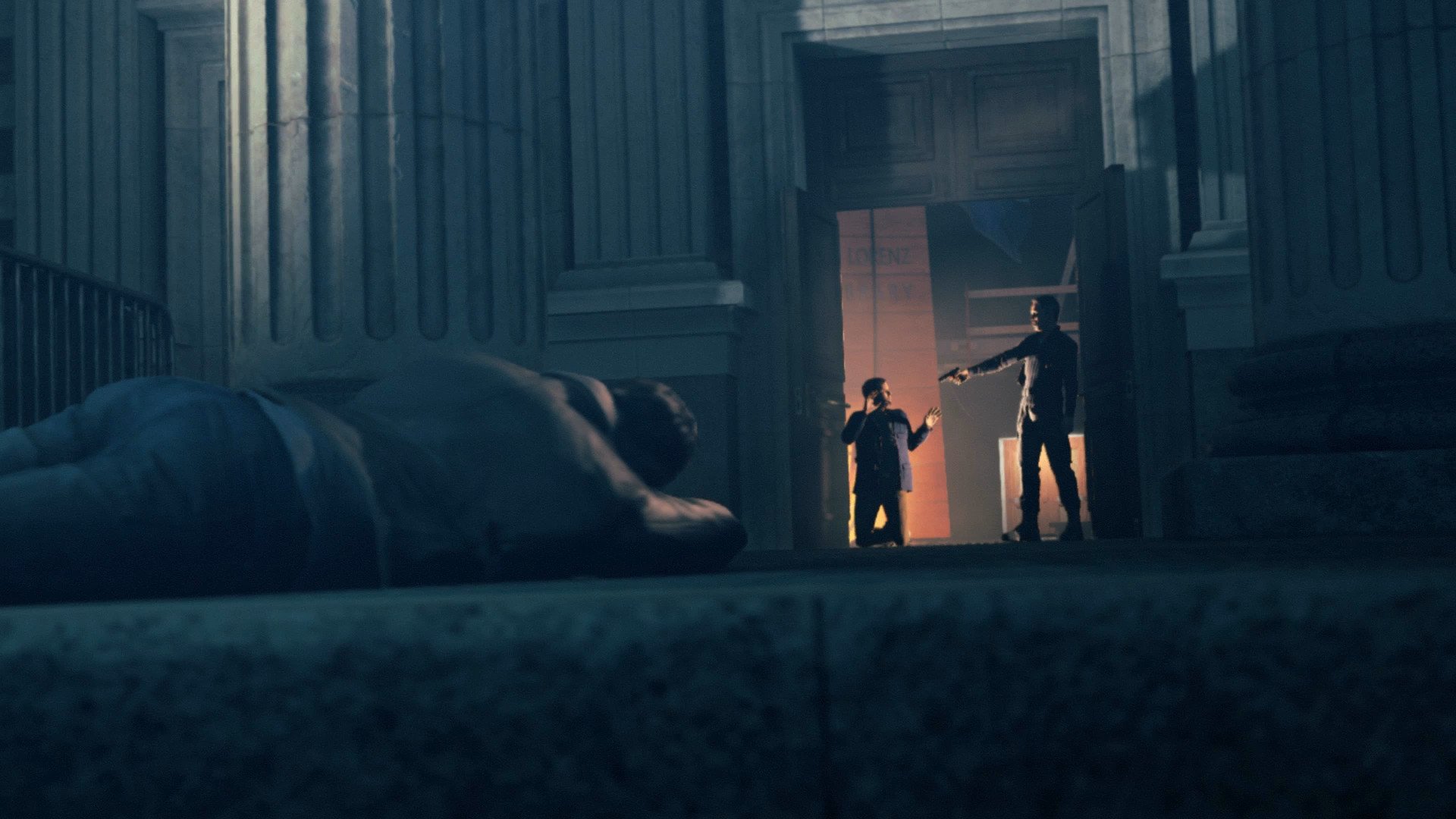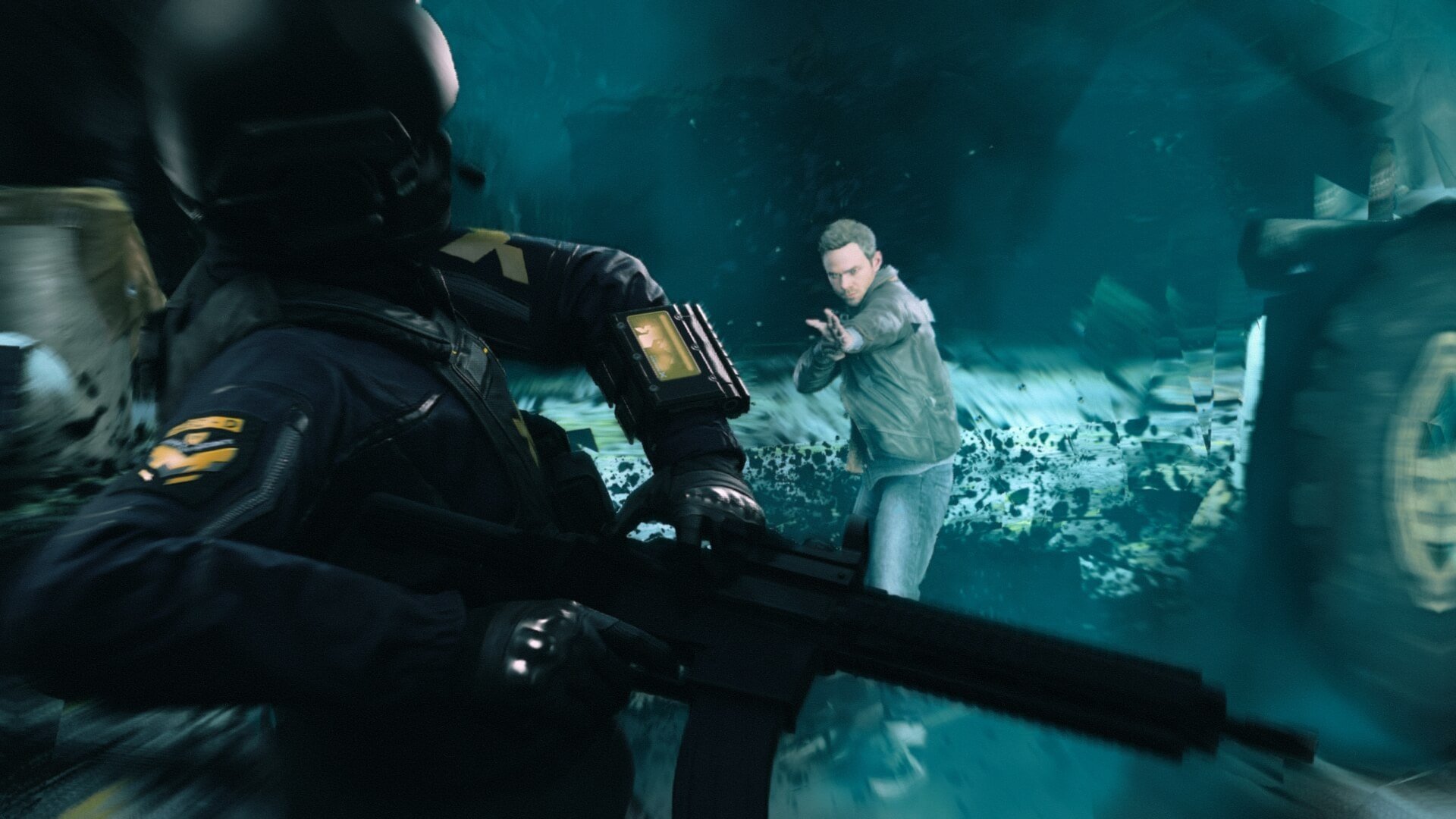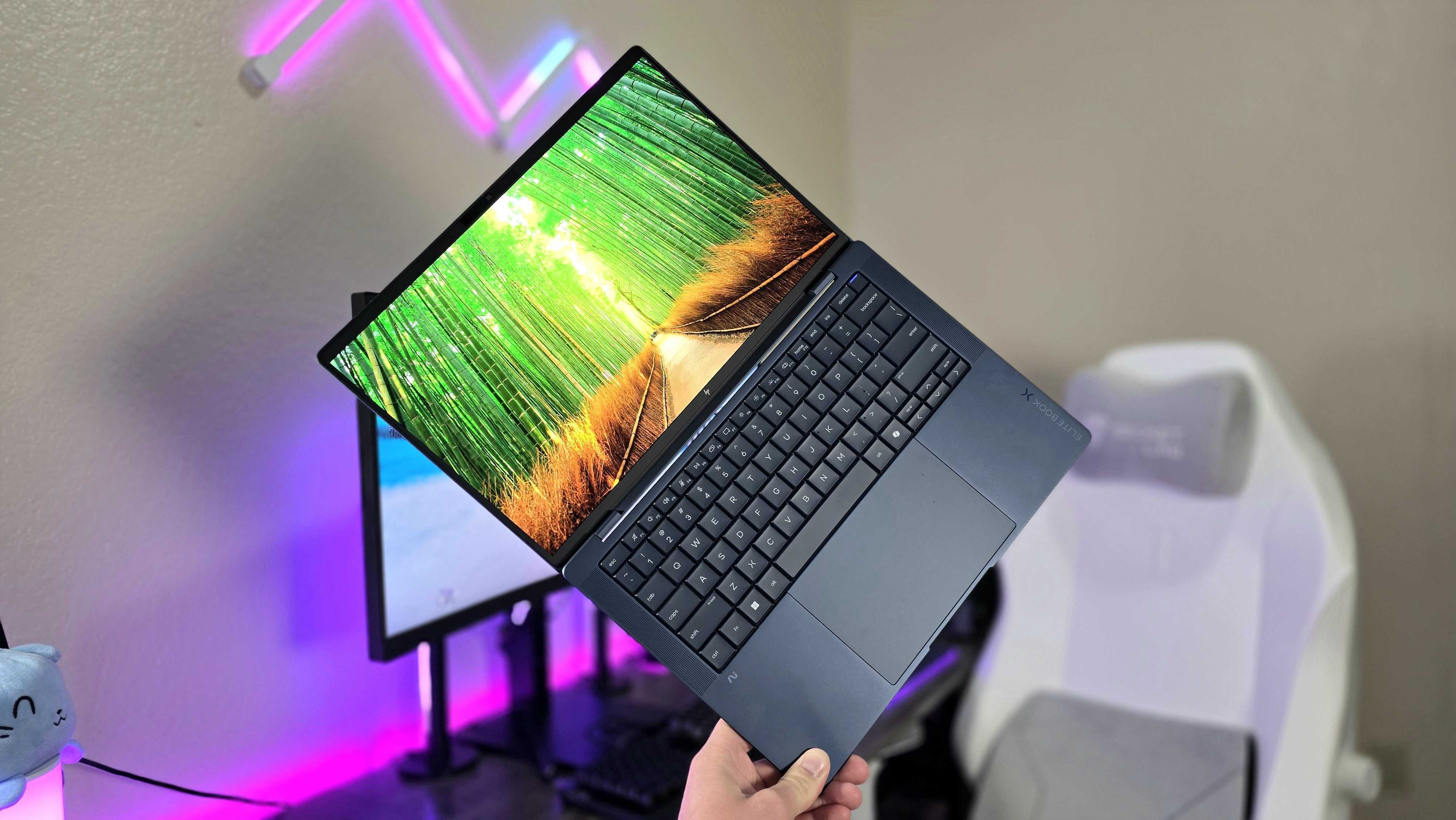Breaking down Quantum Break's story with Narrative Designer, Cam Rogers


Note: The following interview contains minor spoilers surrounding the themes of Quantum Break's story
Last week Microsoft's time-bending shooter, Quantum Break released worldwide, blending a live-action show with a traditional third-person shooter. Whether you've completed the main story or only played the game's first act, it's hard to deny the game's complex, interwoven narrative is one of best parts of the package. We had the opportunity to sit down with author and writer at Remedy Entertainment, Cam Rogers, to discuss the creative process behind Quantum Break's story and the hurdles overcome during its creation.
Cam Rogers joined the writing team at Remedy Entertainment during the early days of the project, helping form the game's storyline, the characters and the world around them. While taking part in this process he influenced the game's narrative structure, brainstormed the ideas behind the plot and how this would play out over the course of Quantum Break. During his time at the studio, he contributed to the earlier stages of script writing, leaving the studio during the final months that lead up to the game's release. He also wrote Quantum Break's tie-in novel, Quantum Break: Zero State, which released alongside the game last week.
They were looking to hire another writer. I think they had around two hundred applicants, and I sent in an application basically. So it was three or four rounds, over a nine-month period and that involved the initial written application [and] I sent in a sample of my work. They wanted me to write a spec script for an Alan Wake scenario, which I did, and they liked. That lead to one or two Skype calls, those one or two Skype calls lead to me being flown over to Finland for a face-to-face interview and nine months after the process kicked off, they gave me the job. I think they had somewhere between two hundred and two hundred and fifty applicants. It was a really long selection process, largely because they were so busy and had so much submitted material to read through from applicants.

Shaping the future
A unique aspect of Quantum Break is the high-budget integrated live-action TV show that expands on the main plot of the game itself. The course of both the game and live-action show change based on decisions the player makes at the end of each act, giving each player their own tailored experience. Rogers explained that this posed a challenge for the team, but was much more manageable than other narrative challenges they faced. The combined experience of the entire writing team also helped this, including Roger's background as he explained.
If you've played role-playing games, particularly as the game master (and you're the kind of game master who's okay with your players going off script) then you'll learn really quickly how to think laterally and made lemonade out of whatever sort of lemons they're randomly throwing at you. We thought on our feet pretty quickly with regards to the branching material. The real challenge of that branching stuff was the junction moments.For people who don't know the junction moments is when you set foot in the shoes of the villain, you see two oncoming futures, and you choose the one you want to direct the future down, and you direct the future in that direction by taking the appropriate action that triggers off the cause and effect that makes that future come to be. Now the thing is, it would be very easy to have a black and white choice (this future has a lot of benefits, this future has a lot of negatives). That wouldn't make for terribly good gameplay, so in terms of the branching narrative, what took the time wasn't creating those alternate futures, what took the time was creating balanced junction choices. [...] We wanted maximum conflict in the player about what junction choice they would take.
With such a complex storyline constructed from a range of ideas, Quantum Break story had the potential to become more complicated than initially intended. To prevent this, the writing team at Remedy focused on a subset of fundamental values, which a majority of the game's plot progression is based on. Also taking into account the medium they were working with, certain aspects of the universe were focused on.
Right from the get-go, the design document focused strongly on [that] it's got to be fun, obviously. It's got to be an action-packed thrill ride, you have to care about the characters and the story itself has to sweep you along, but first and foremost, of course, it's also a game. Remedy takes a lot of influence from pop culture, [and] we're all really big fans of pop culture.[…] One of the things we kept our eye on was imbuing it with that momentum and adrenaline. We wanted to do that, but at the same token, we also wanted to tell an effective human story. This was always going to be about Jack coming to a town he left for a reason, to a brother he stepped away from, for a reason. You have that prodigal son aspect [and a] search for a home you'll never get back. There's a bittersweet melancholy to it, but there's also got to be a triumph, there has to be redemption, and you've also got the sadness of Jack and Paul being very good friends, and now they're pitted against each other. We needed to find a way to establish that strongly to begin with and really bring that tragedy out.Evenhandedly, we were trying to provide any cool amount of adrenaline, fun, exciting gameplay challenge and a lot of those American action film thrills, but also give it a strong warm beating heart. Sometimes that can be a balancing act because, with a thing like this, the game has to come first.

Fact checking
With a complex narrative, such as Quantum Break's, the use of science and real-world theories was key in creating such a believable, yet engaging plot. This both helped and hindered the writing team at Remedy Entertainment, with strict rules in how the story's path could develop.
In equal measure, it imposed challenges and was massively helpful in keeping us on track. As you've probably heard, we took advice from a quantum physicist, named Syksy Räsänen. He was one of the guys working on the large hadron collider at CERN; easily one of the smartest guys I've ever met. He sat us down, and we had a day with him, just sitting around, asking questions, just kicking stuff around. Based on that, he helped us design the time machine, the way the time machine works, the theories behind how it works and then what we can and can't do if we actually go forward and backward in time. And that set up some hard and fast logical rules that we couldn't break.
With these restrictions, Rogers explained that did cause some problems in the writer's room. While having a set of definite, complex rules allowed the narrative to easily hone in on certain aspects of time travel, the team had to stick to the theories they chose to follow, without contradicting other events in the story.
All the latest news, reviews, and guides for Windows and Xbox diehards.
Time dilation is still something relatively unknown in the science community, which led Remedy to focus certain unproven theories in order to string together proven science. An example of this is the idea of closed loops and prevention of paradoxes, which play a major role in the game's later acts.
For example with closed loops; we couldn't break closed loops. The idea that everything has already been taken into account including the possibility that you might go back in time and change events. So for example, if you had a time machine and said that I'm going back in time, robbing a bank and making myself incredibly rich, I would basically tell no you won't, because you haven't. And that's the kind of thing that this thing circles around. That lead to a lot of headaches in the writer's room, but also a lot of fun.We would often (particularly in the early days) be running away with this idea, doing really good work, be really happy with where it was going [but] because this happens in Act 1, and then you're saying we do this in Act 3, it completely invalidates the really important thing we're doing in the dismount for Act 5. And then you have to go back to the drawing board, unplug stuff, rewire stuff, and the thing is when you do that, you can do it in a way that will make sense, but you've also got to do it in a way that's good storytelling. That's the devil in the entire deal. So that's why it took nearly twelve months to properly nail down a story flow that would take into account player agency, branching futures and the inevitability of the player going back in time and attempting to change stuff as well.
Closed loops also play a part in character development, challenging Jack's intuition and creating an obstacle for him to overcome. This sets some limitations to the powers obtained through Chronon Syndrome, adding weaknesses to an otherwise all-powerful protagonist.
There's also the issue of maintaining the tension of a hero who wants to go back in time and change things and is bullheaded enough to think he can, even though he's got people he knows telling him he can't. Some people say they can't because they're a scientist and they've studied the theory, but people say they can't because they've tried. But our hero says otherwise.So the question is, how do you maintain tension with a hero who's trying to do that, even though everything seems to say you can't? It was a fun, complex challenging undertaking.
Beyond the game
While Cam Rogers contributed a massive amount of time to Quantum Break's story and the creation of the game's universe, he also worked on a tie-in novel, available now, which explores different events than those in the game. His newly released book, Quantum Break: Zero State, builds upon ideas introduced in the game's narrative while following a different timeline to the events in-game. This birthed the opportunity to experiment with concepts not possible in the game's format.
[When] talking about alternate futures and directing the oncoming future down one or two paths, that immediately gets into multi-world theories and parallel timelines. Parallel timelines are a really strong part of the whole Quantum Break deal. The deal with the book, (and Sam [Lake] and I talked about this probably from my second or third week on the project) that if a book happened we should really take advantage of the parallel timeline deal.One of my goals was to do things that we just couldn't do in the game for reasons of budget, time, complexity or to go in a different direction the game's story would have allowed for. And shine some light on aspects of character story, background, and history, that the game can't to better flesh it out for the players and the readers. One of the points of the book was to create something that was familiar, yet different, but didn't slavishly repeat or retell game's narrative, because, why would you want to read a 300/400 page telling of a game you just played? So this is an exploration of the character's stories, the story of Riverport and by setting it in a timeline you don't get to experience in the game. You get a better behind-the-scenes look at all of the characters, and in doing so, it can help shed a little light of a few of the lingering mysteries at the end of the game.

The road ahead
Quantum Break concludes with a somewhat open ending, suggesting more to come from the franchise later down the line. Between the game's main narrative, additional content and the book, there are still many questions left answered. Rogers explained that the game's universe still has a lot to be explored, with the chance of a sequel later down the line.
I can tell you that we definitely built the game with sequels in mind, and through the novel as well, I quite purposely left an even spread of things unanswered, that would provide fodder for a second book. So, there's definitely more to do, there's definitely more to tell and we did keep one eye on that during the building of it. But as to whether there will be a sequel, I haven't been told anything but I know there are a lot of people who would like it to happen.
While parts of the game's universe have been intentionally left out from Quantum Break's plot, Rogers still has some areas of the story which he would personally like to explore in more depth.
To be perfectly honest, there is a lot of stuff that hasn't yet got the treatment it has deserved just because this is the first installment and frankly that's exactly how it should be. There's a lot I'd like to explore. As far as the characters go, I know that I'm onto something good and substantial when I kind of feel I could look over my left shoulder and see the characters walking along with me if you know what I mean? Knowing Jack, Beth, Paul and Hatch the way that I do, I would really like to show off some more of where they came from, who they are and where they're going to go. And what that means not just for Riverport, but also the world. The first game occurs in a fairly small location, and it's a bit of a terrarium.I can't speak for anyone else involved in the project at all, but just my instincts as a storyteller is now that we've established this incubator, I'd like to broaden the scope in terms of a larger world and the effects of these events on the world. That's where my instincts would take me if I had a chance to do a sequel.
Adding onto this, he explained that a majority of the character backgrounds have already been locked down.
There's character profiles on the whole cast, and you get a lot more of that in the novel. You get a better understanding of where Jack has come from, why he went there. His relationship with Beth in the novel is slightly different. The novel has a slightly different start point, in the sense that its start point is shaped by causalities, prior to the game's time frame, that differ from the causalities that shape the start point in the game.The first chapter is online and that does a pretty good job of illustrating what I was talking about. You get a better look at who Jack and Paul were when they were younger, and a certain critical event that happened involving a gangland figure and somebody Jack was seeing at the time.
We'd like to thank Cam for putting aside some of his time to answer our questions!
For those who enjoyed the Quantum Break's story, we recommend picking up Cam's novel, Quantum Break: Zero State. If you're yet to play the game itself, make sure to take a look at our in-depth review!

Matt Brown was formerly a Windows Central's Senior Editor, Xbox & PC, at Future. Following over seven years of professional consumer technology and gaming coverage, he’s focused on the world of Microsoft's gaming efforts. You can follow him on Twitter @mattjbrown.
